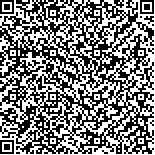王莉,朱毅,李晓丹,等.低频重复经颅磁刺激治疗脑卒中后亚急性期非流利性失语症的有效性及安全性评价[J].中华物理医学与康复杂志,2019,41(9):662-667
扫码阅读全文

|
| 低频重复经颅磁刺激治疗脑卒中后亚急性期非流利性失语症的有效性及安全性评价 |
|
| |
| DOI:DOI:10.3760/cma.j.issn.0254-1424.2019.09.005 |
| 中文关键词: 低频重复性经颅磁 脑卒中 非流利性失语 安全性 有效性 |
| 英文关键词: Transcranial magnetic stimulation Stroke Aphasia Safety Effectiveness |
| 基金项目:海南省医药卫生科研项目(1601320141A2002) |
|
| 摘要点击次数: 6645 |
| 全文下载次数: 6966 |
| 中文摘要: |
| 目的 评价低频重复经颅磁刺激(rTMS)治疗脑卒中后非流利性失语症的有效性及安全性。 方法 纳入脑卒中后亚急性期非流利性失语症患者45例,按照随机数字表法分为0.5 Hz组、1 Hz组、假刺激组,每组15例。在常规语言训练基础上对患者右侧额下回三角部进行不同频率(0.5 Hz、1 Hz、假刺激)的rTMS治疗,治疗10 d。于治疗前、治疗5 d、治疗10 d,采用西方失语症成套测验(WAB)中文版对各组患者进行语言功能评价,并观察不良事件的发生。 结果 治疗前,3组患者WAB评分失语商、自发言语、听理解、复述、命名比较,差异无统计学意义(P>0.05)。3组患者治疗5 d及10 d WAB评分均较组内治疗前显著改善(P<0.05)。与组内治疗5 d比较,0.5 Hz组治疗10 d 4项指标(失语商、自发言语、听理解、复述)显著改善,1 Hz组治疗10 d WAB评分5项指标均改善(P<0.05),假刺激组治疗10 d 4项指标(失语商、自发言语、听理解、命名)改善(P<0.05)。与假刺激组治疗10 d同指标比较,0.5 Hz组听理解评分[(7.34±2.08)分]显著较高(P<0.05),1 Hz组自发言语评分[(11.25±3.13)分]显著较高(P<0.05)。 结论 1 Hz及0.5 Hz的rTMS均可有效改善脑卒中后亚急性期非流利性失语症患者的语言功能,其中,0.5 Hz rTMS在改善患者听理解能力方面较优,1 Hz rTMS在改善患者自发言语能力方面较优,且安全性均良好。 |
| 英文摘要: |
| Objective To evaluate the safety and effectiveness of repeated transcranial magnetic stimulation (rTMS) for treating non-fluent aphasia after stroke. Methods Forty-five stroke survivors with non-fluent aphasia were randomly divided into a 0.5 Hz group, a 1 Hz group and a sham group, each of 15. In addition to routine linguistic training, the three groups were given rTMS over the inferior frontal gyrus of the right hemisphere at the corresponding frequency or sham stimulation. Before as well as 5 and 10 days after the treatment, all of the subjects were evaluated using the Chinese version of the Western Aphasia Battery (WAB). The occurrence of adverse events was also observed. Results Before treatment, no significant differences were observed in the groups′ average aphasia ratio, spontaneous speech, listening comprehension, retelling and naming using the WAB. After 5 and 10 days significant increases were observed in the average WAB scores of all three groups, but the listening comprehension of the 0.5 Hz group was significantly better than that of the sham group 10 days later, as was the spontaneous speech of the 1 Hz group. Conclusion rTMS at either 1 Hz or 0.5 Hz can improve the linguistic functioning of stroke survivors with non-fluent aphasia. Both 0.5 Hz and 1 Hz rTMS are safe, but the latter is more effective. |
|
查看全文
查看/发表评论 下载PDF阅读器 |
| 关闭 |